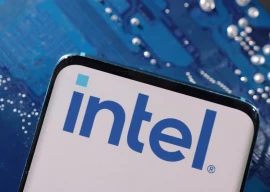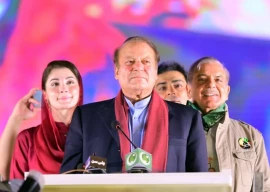
So far, Trump's signal contribution to the election season debate has been a vigorous attack on the proposed Trans-Pacific Partnership (TPP). Conceived in an effort to limit Chinese influence in the Asia Pacific, the TPP is intended to integrate that region in an economic alliance with major Western powers, chief among them the US. The basic mechanics of the pact are fairly simple — removal of tariffs, expedited customs clearance and reduced restrictions on transnational banking. Of the 12 participating nations, only the US houses a major consumer market. So while exports are expected to rise for all, the most benefit is likely to be realised by countries that have become manufacturing hubs for high-end consumer goods, like Vietnam, Mexico and to a lesser extent Malaysia. The sheer scale of economic activity likely to be affected is massive; the bloc would constitute no less than 40 per cent of global GDP and projected commercial benefits far exceed every comparable free trade agreement in the region. For member nations then, a harmonised trade regime will attract increasing trade flows into its own orbit. Unfortunately for non-members like Pakistan, much of this gain is expected to be at our expense.
Take for example the export of textiles. As outlined in The New York Times, the textile trade is likely to be governed by a “yarn forward” rule or a condition that garments may only qualify for duty free access if they are both manufactured within the trading bloc and composed of yarn originating in a member nation.
Within the TPP, the US is the only major producer of textiles. Effectively, the rule guarantees protection for these products. Due to higher costs, exports of American cotton and yarn have remained chronically uncompetitive for some time now. However, with duty free access to American retailers guaranteed, garment manufacturers within the trading bloc are expected to turn away from traditional export leaders like Pakistan and towards American textiles. For Pakistani textiles, one possible remedy involves moving into the trade zone. According to Bloomberg, established textile names from China have already relocated manufacturing capability to Vietnam and more are likely to follow.
Alternatively, textile manufacturers may consider reorienting towards countries not in the TPP fold. Obvious destinations include China and South Korea. And yet counter-intuitively, our exports to both have shown a downward trend in recent years. Yarn exports to China have fallen steadily even as demand in that country has increased. Over the last two years, India has overtaken Pakistan as the leading exporter of yarn to China. Exports to South Korea have plunged at an even greater rate. Year on year decreases of 33 per cent in 2013 and 23 per cent in 2014 reflect just how difficult it will be for Pakistani textiles to remain viable if the TPP comes into force.
Having secured executive approval in the US last year, it was expected the trade deal would be ratified by Congress at some point this fall. But of course, Trump wasn’t expected to be the Republican candidate for president — and his rhetorical assault on the pact was certainly not expected to polarise public opinion to such devastating effect. Understandably, Congressional support for the deal has plummeted and US participation in the bloc appears uncertain.
Integration is the watchword for every aspirational economy in the world today. Liberal and standardised trade regimes are universally accepted as some of the best accelerators of economic growth. So yes, it’s possible the TPP may never come into force — at least in its current iteration. But this doesn’t mean economic integration in our part of the world can be ignored. If the economic outlook here in Pakistan is to be anything other than grim, we must urgently rectify the cocktail of deficiencies that have long plagued our local industry.
Tailpiece: Just how toxic is talk of the TPP this election year? In a flip flop that has become emblematic of the Democratic Party, Secretary of State Clinton was for the trade deal but presidential candidate Clinton now opposes it. Except campaign surrogate and longtime Clinton confidante, Governor Terry McAuliffe claims the candidate intends to reverse her position yet again if she ends up in the White House. A clarification that doesn't really clarify anything at all. Predictably, Clinton representatives deny the claim. Go figure.
Published in The Express Tribune, August 17th, 2016.
Like Opinion & Editorial on Facebook, follow @ETOpEd on Twitter to receive all updates on all our daily pieces.

























1714024018-0/ModiLara-(1)1714024018-0-270x192.webp)









COMMENTS (4)
Comments are moderated and generally will be posted if they are on-topic and not abusive.
For more information, please see our Comments FAQ